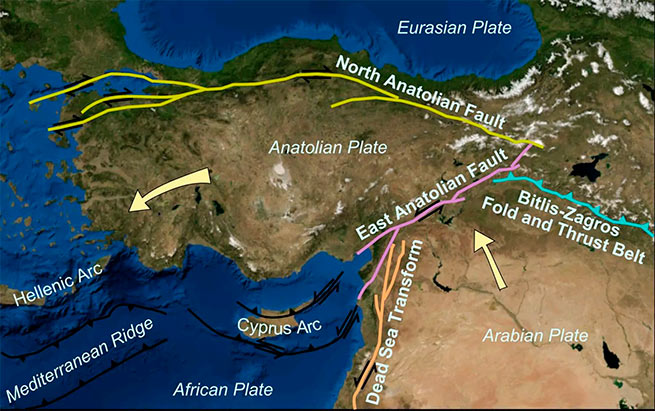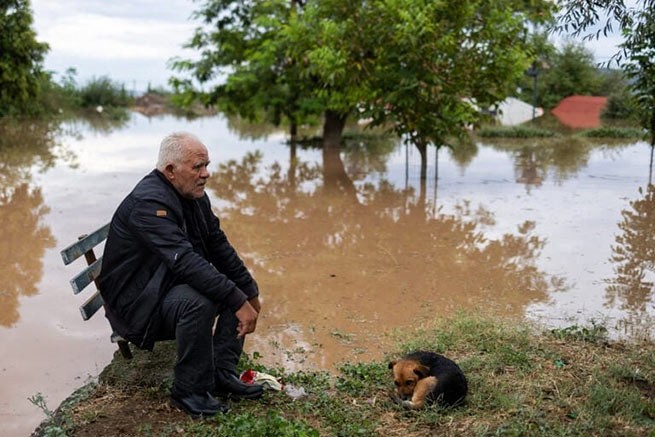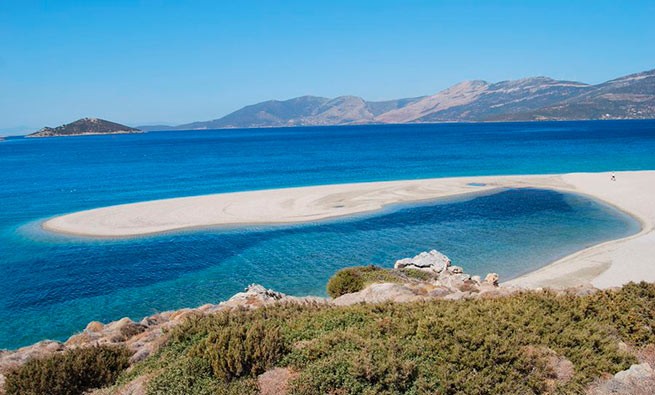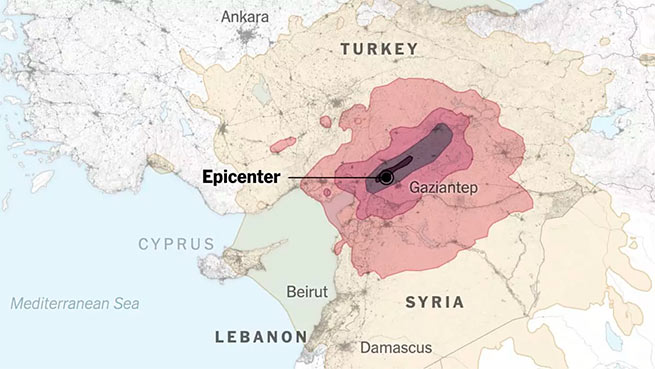Greek seismologists are confident that the catastrophic earthquakes that occurred today in Turkey will not affect Greece, as they occur between other lithospheric plates.
“We still don’t know if the earthquake of magnitude 7.7 on the Richter scale that struck southern Turkey on Monday afternoon was a major one,” Efthymios, professor and president of the Hellenic Organization for Earthquake Planning and Protection, told state news agency amna. Lekkas. “This is a very strong earthquake and the consequences will be numerous,” Lekkas said.
Lekkas added that the earthquake occurred in a large fault that starts in Lebanon and reaches the Black Sea. He calculated that this quake would not affect the faults in the Greek area and was not related to the 4.2 Richter earthquake that hit Rhodes in the early hours of the morning.
Επιφανειακός σεισμός μ7.8 στη τουρκία στα στα με συρία μεγάλο τήγμα της ανατολικής ανατολίας (εμsc). Αναφέρονται πολλά θύματα, δυστυχώς.
Ενας σεισμός που έει γεωφυσικές προϋποθέσεις να διεγείρει άλλους σεισμούς στην ευρύτερης ανατοκς pic.twitter.com/Rjs8YvpfR7— Gerasimos Papadopoulos (@GerasimosPapad2) February 6, 2023
Another seismologist, Gerasimos Papadopoulos, wrote on social media: “A surface earthquake of magnitude 7.8 in southeast Turkey on the border with Syria on the Eastern Anatolian Fault Line (EMSC). Many casualties are reported. Earthquake geophysical conditions to trigger other earthquakes in the wider Eastern Mediterranean region”.
⚠️#Turkey/#Turkiye🇹🇷: A major #earthquake of magnitude Mww=7.5 was registered at 4 KM SSE #Ekinozuprovince of #Kahramanmaras. Depth: 10 km.
More info: https://t.co/DMK6ZSeutk
Did you feel this earthquake?, Tell us!.#EQVT,#deprem,#زلزال,#σεισμός,#seismos,#רעידת_אדמה,#terremoto. pic.twitter.com/pSkE1DU9YS— American Earthquakes 🌋🌊🌎 (@earthquakevt) February 6, 2023
What happened in southern Turkey this night And afternoon, hasn’t happened in over a century. An extremely strong earthquake of magnitude 7.9 shook the Earth at 3:17 am. The affected area is located on the border with Syria. After the main earthquake, there were about 42 aftershocks (tremors) with a magnitude of more than 4.5, and at 13:23, there was another shock, even more powerful than the previous one. The exact death toll is rising by the hour: at the time of writing, we are talking about 2,400 victims, but according to some estimates, there could be at least 10,000 between Syria and Turkey.
But what is the root cause of all this? Couldn’t this have been predicted? Why do earthquakes occur? And why in some cases these are small “shocks”, and in others – the destruction of entire cities? The Earth’s crust is divided into many plates that “slide” over the Earth’s mantle, sometimes meeting and causing earthquakes.
Moreover, in addition to collision, these plates can move away from each other (thus opening up a new ocean) or move horizontally relative to each other. All these movements of the plates of the earth’s crust generate ruptures in the rocks: if these ruptures are subjected to displacements, we speak of “faults”. It is faults that generate earthquakes: gaps, therefore, in the earth’s crust. The rupture and displacement of the fault generate seismic waves. When an earthquake occurs, two general types of waves are generated that propagate from the hypocenter (the point deep in the earth’s crust where a rupture occurs, generating/moving a fault). There are two types of waves: P-waves, which only cause compression in the material they pass through without causing damage, and S-waves, which are shear waves and cause real damage during an earthquake. Therefore, the points on Earth where the collision of plates occurs are the most dangerous from a seismogenic point of view. It was at one of these critical points that the earthquake occurred in Turkey.

Let’s analyze the “crime scene” to understand what exactly happened at that moment in the earth’s crust. If we pay attention to the picture below, we can see that the earthquake occurred in an area where there are at least 3 mega-faults that demarcate different tectonic plates! The arrows in the figure indicate the movement of each plate. The following faults are affected: East Anatolian and North Anatolian.
They are at the point where the Anatolian Plate, the African Plate and the Arabian Plate meet. Thus, the indicated location is at a very critical triple point in the earth’s crust, where several movements of the earth’s crust take place.
In particular, the epicenter of the earthquake was located in the sector of the eastern part of the East Anatolian Fault, hundreds of kilometers long. This fault is part of a larger structure, namely the North Anatolian fault, which is about 1000 km long. The longer the faults, the higher the earthquake magnitudes can be. The final cause of the catastrophic earthquake in Turkey is due to the sudden movement of the East Anatolian fault, which provoked the collision of the Anatolian and Arabian plates, giving rise to other faults in the process.
Will there be further aftershocks in southern Turkey? Given the existing faults, it is likely that they will, although it is impossible to estimate exactly on what scale. Predicting an earthquake is basically impossible. However, it is possible to determine which place on Earth is most prone to earthquakes.
Materials used new-science.ru







More Stories
Dolphins appeared in Thermaikos this morning
Most polluted countries in 2023: Greek regions with worst air quality
Clearchos Marousakis warns of hail and tornadoes (video)